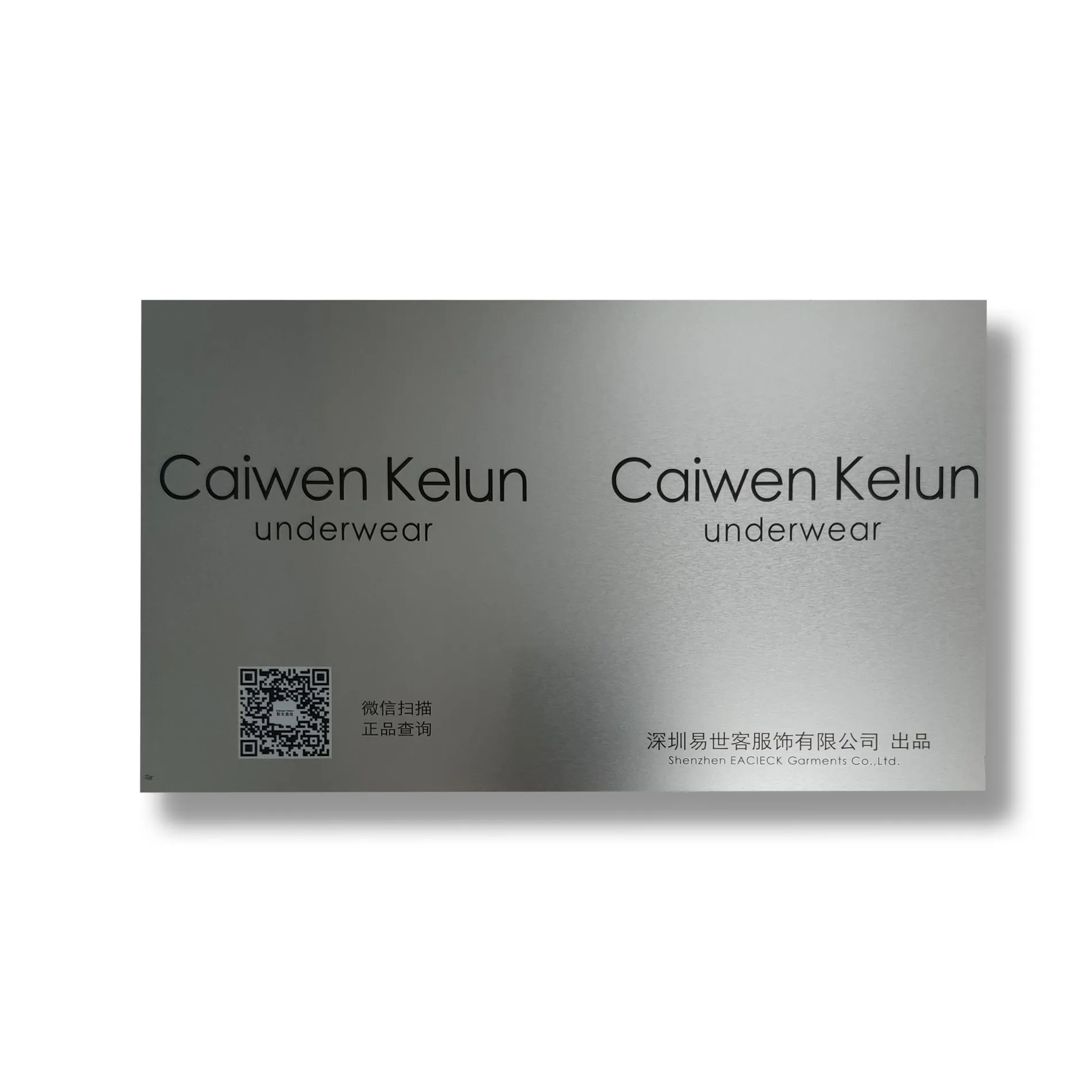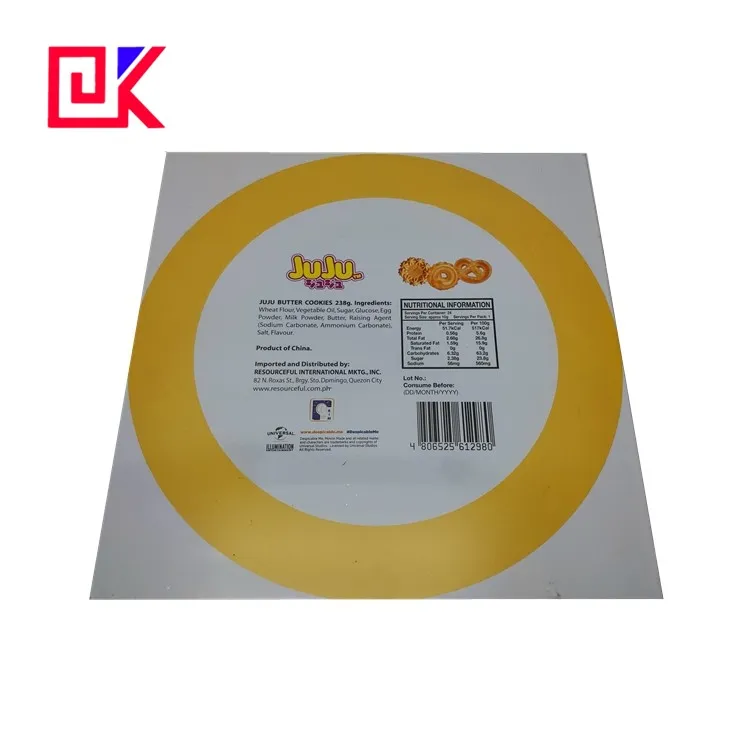Tinplate packaging cans are widely used in the food, chemical, pharmaceutical and other industries. With their superior corrosion resistance and sealing properties, they have become the preferred packaging material for many products. However, consumers or manufacturers sometimes find black marks inside tinplate cans when using them. This black mark not only affects the appearance of the can, but even raises questions about the safety of the product in some cases.
So, what are these black marks? Why do they appear? Will they affect product quality or consumer health? This article will explore this in detail.

What is the structure of tinplate?
Before we delve into the causes of black marks, it is necessary to first understand the structure and properties of tinplate. Tinplate, also known as tin-plated iron, is a metal material with a layer of tin on the surface of a thin steel plate. Tinplate has become an ideal packaging material because the strength and ductility of steel are combined with the corrosion resistance of tin. Its common applications include food cans, beverage cans, aerosol cans, pharmaceutical cans, etc.
Composition of tinplate
Tinplate is a composite material consisting of a base steel plate and a coating of tin. The steel plate is the basis, providing the hardness and strength of the can body, while the tin coating plays the role of preventing the steel from coming into direct contact with the air or the contents of the package. The role of tin is to prevent the steel from rusting and to improve the durability of the can body.
Tinplate coating protection
In order to further enhance the corrosion resistance of tinplate, especially when the packaging can is used for food, chemicals and other occasions that need to be stored for a long time, a protective paint layer is usually applied to its inner and outer surfaces. This coating prevents the contents from coming into direct contact with the tinplate, avoids chemical reactions, and prolongs the service life of the can body.
What are the black marks in tinplate packaging cans?
The black marks in tinplate cans are usually caused by corrosion of the can. When the metal in the can reacts with the acid in the food or environment, corrosion occurs, resulting in black marks in the can. Although this may make people feel uncomfortable, as long as the can itself is not damaged or swollen, the food inside is usually safe.

Why do tinplate packaging cans corrode?
There are many reasons for the corrosion of tinplate packaging cans, which may be related to factors such as the can material itself, the production process, the coating quality, and the external environment.
Causes of corrosion of tinplate packaging cans:
1. Traces caused by oxidation of the tin layer
2. Traces produced by metal corrosion reactions
3. Discoloration caused by uneven coating or aging
4. Impurities or contaminants in the production process
Traces caused by oxidation of the tin layer
Tin plating is an important component of tinplate, and its main purpose is to prevent steel from rusting. However, tin itself is also a metal that is prone to oxidation. Especially in humid or high temperature environments, the tin layer reacts with oxygen in the air to produce tin oxide. Tin oxide may appear gray-black on the surface of the can, forming the black traces we see.
This phenomenon generally occurs on the inner surface of the packaging can, especially in areas where the protective paint is not applied or the coating is incomplete. Although the oxidation of the tin layer does not cause structural damage to the can, it may affect the appearance of the can and bring potential safety hazards to certain sensitive contents, such as food or medicine.
Traces produced by metal corrosion reactions
Although tin has good corrosion resistance, in some cases, the metal material in the can may still react chemically with the contents. For example, acidic or alkaline foods, beverages or chemicals react with tin or steel to produce black or dark corrosion products. This corrosion phenomenon is particularly prone to occur when the coating inside the can is scratched, peeling or of poor quality.
In these corrosion reactions, the black marks may be deposits of iron oxide, tin oxide or other metal compounds. The risk of such chemical reactions is greatly increased when the protective coating inside the can is damaged by poor processing, transportation friction or long-term storage.
Discoloration caused by uneven coating or aging
Tinplate packaging cans are often sprayed with a special coating on the inside to enhance their corrosion protection. These coatings are mainly polymer-based materials that can effectively isolate the contents from the metal of the can. However, the quality of the coating is directly related to the protection of the can. If the coating is uneven, not thick enough or has aged during use, it may cause black spots or marks on the surface of the can.
Such black marks are not the result of metal corrosion, but the performance of the coating material after oxidation or physical damage. A typical manifestation of coating aging is color change, especially after being exposed to high temperatures, ultraviolet rays or certain chemicals, the originally transparent or light-colored coating may become dark or black.
Impurities or contaminants remaining in the production process
During the production process, tinplate packaging cans need to go through multiple steps, including steel processing, tin plating, coating spraying and high-temperature curing. If the production environment is not clean or the chemical materials used are not pure enough during these links, impurities may remain on the surface of the can. These impurities may gradually appear as black marks during subsequent use or storage.
For example, during the can molding process, lubricating oil, metal chips or other contaminants in mechanical equipment may adhere to the surface of the can. If these impurities are not completely removed, they may react with the metal of the can over time to form black spots or streaks.

What are the effects of black marks in tinplate cans?
Although the appearance of black marks in tinplate packaging cans is usually due to metal oxidation, coating aging or impurity contamination, will these marks affect the function of the can or the safety of the contents? This needs to be evaluated from multiple angles.
Impact on product quality
In industries with high hygiene requirements such as food, beverages, and pharmaceuticals, the cleanliness and integrity of packaging materials are key criteria for evaluating product quality. Although the appearance of black marks does not necessarily mean that the can body has been severely corroded, it may reduce the appearance quality of the product and thus affect consumer trust.
Especially in canned food or beverage packaging, consumers often have concerns about black marks, worrying that chemical changes in the can body may affect the safety and flavor of the food. Although in most cases, black marks only involve surface oxidation and do not directly affect the contents, consumers' sensory experience and psychological expectations are still factors that cannot be ignored in product sales.
Impact on packaging safety
If the black marks are due to oxidation or corrosion of the tin layer or steel of the can body, it may mean that the protective performance of the packaging can is declining. Especially in the storage of corrosive contents, the oxidation of the can metal will aggravate its embrittlement, which may eventually cause the can body to rupture or leak.
Therefore, although the black marks may only be a surface discoloration phenomenon in the early stage, if they are not taken seriously, the overall structure of the can body may be damaged over time, posing greater safety hazards.
Potential impact on health
If the black marks are caused by chemical corrosion of the inner wall of the can, it may mean that harmful substances in the can material or coating are being released. For example, some aged coatings may release toxic volatile organic compounds (VOCs), which pose a potential threat to human health.
In addition, if the metal corrosion products of the can react with the contents, harmful substances may enter the food or beverage, especially in the storage of acidic foods. Therefore, when the manufacturer finds black marks, it should immediately conduct detection and analysis to ensure that it does not pose a threat to product safety.

How to prevent the generation of black marks in tinplate packaging cans?
In order to avoid the impact of black marks on the quality of packaging cans and the safety of contents, enterprises should take effective preventive measures during production and storage.
Means to prevent black marks in tinplate packaging cans:
1. Optimize coating process
2. Control the cleanliness of the production environment
3. Reasonable storage environment
Optimize coating process
Ensuring that the coating inside and outside the tinplate can is uniform and complete is the key to preventing the generation of black marks. Enterprises should regularly check the working status of coating equipment to ensure that the coating thickness on each can surface is uniform and avoid local weak areas.
Control the cleanliness of the production environment
During the production process of tinplate cans, enterprises should ensure the air quality and equipment cleanliness in the workshop to prevent impurities, oil or other pollutants from adhering to the surface of the can. In addition, the lubricant of the equipment should also be a high-purity, low-residue product to avoid chemical pollutants from entering the production process.
Reasonable storage environment
Tinplate cans should be stored in a dry and cool environment to avoid oxidation of the tin layer under high temperature and high humidity conditions. Especially during transportation and long-term storage, preventing the can from being affected by the external environment will help maintain the stability of its appearance and quality.

